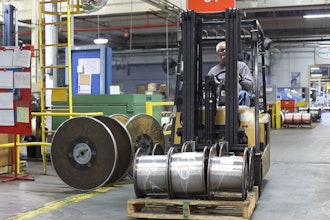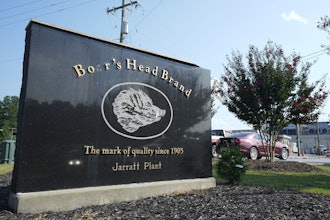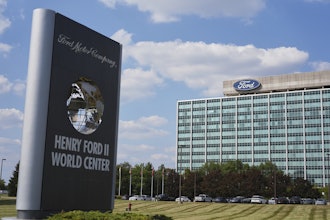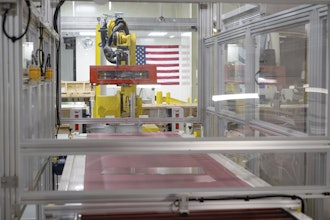Innovative new technologies are making Reliability Centered Maintenance (RCM) an attractive possibility for a growing number of companies. Sensors built into equipment can detect abnormal vibrations, temperature fluctuations, fluid condition, and many other metrics that can help identify maintenance issues early, before they cause costly damage. Diagnostic tools are also becoming more sophisticated, performing more of the complex analysis needed to determine equipment condition and reducing reliance on experts to perform checks.
The trouble is, these condition monitoring technologies often use proprietary software to analyze and interpret data, or else they are offered as part of a maintenance plan that must be purchased through a third-party. This is why much of what has been written about using these technologies to implement RCM focuses on the need for additional software solutions for the sole purpose of aggregating and analyzing equipment data.
As a result, the mistaken belief that CMMS solutions are inadequate for the demands of RCM has spread, leading companies to waste time and money on additional software solutions that end up making their maintenance operations more complex rather than more efficient.
In reality, leading CMMS solutions offer an array of features that make them perfectly suited for RCM.
Pigeonholed by Preventive Maintenance
At their core, CMMS solutions are designed to achieve broad objectives, such as aggregating critical equipment data, streamlining and automating maintenance workflows, making resource allocation more efficient, and simplifying scheduling— yet they are often thought of as intended exclusively for preventive maintenance.
While these core functions do make the transition from reactive to preventive maintenance much easier, they are equally vital to more optimized maintenance programs like RCM. After all, RCM involves the expansion of the type and quantity of data that is being used to identify equipment condition, and it would be nearly impossible to make any sense of this data without a CMMS program in place to monitor it.
In leading CMMS solutions, sensor data can be automatically entered into the system as logs, and thresholds and ranges can be set to trigger alerts, work orders, and/or inspections when this data falls outside of the acceptable range. The result is a system that eliminates the lag in response time between data availability and the coordination of needed maintenance services.
Diagnostic tests performed with advanced equipment can be set up as inspections in best-in-class CMMS solutions, making it easy to keep this data centralized and organized. Alerts and/or work orders can then be automatically triggered if the inspection fails, reducing maintenance turnaround time by converting this critical data into swift action.
All of this, however, assumes that diagnostic criteria are already defined by the time this information is submitted to a CMMS solution. Failure mode analysis must first be performed on critical equipment in order to target specific components for monitoring, and to determine what types of data need to be gathered to assess the condition of those components.
This is where some would argue that additional software solutions become necessary to analyze and interpret the data to establish failure mode criteria. In reality, CMMS solutions should be the first place to look when gathering failure mode data.
Configuration is King
CMMS solutions play two central roles in failure mode analysis: they create an accurate, reliable record of maintenance history that can be used to identify common causes of failures, and they standardize maintenance tasks and inspections, which can incorporate failure mode data for quick troubleshooting.
For companies already using a CMMS solution, the first place to look when performing failure mode analysis is at past repairs. Which components are failing most often? What have mechanics and operators noted about these failures? The answers to these questions are easy to find in a CMMS system, and can be used to form the backbone of failure mode analysis and overall RCM objectives.
Once these historical issues have been defined, diagnostic technologies can be used to catch issues that have not yet resulted in failures, or identify the root cause of historical issues. This information can then be combined into maintenance schedules and inspections for quick, accurate troubleshooting and analysis in the event of equipment failure.
And because CMMS solutions make it easy to standardize maintenance checks and inspections across an organization, they can easily be analyzed over time and tweaked for accuracy. This is the key advantage that CMMS solutions offer over systems that perform diagnostics alone: CMMS solutions combine diagnostics with real operational data.
Thus, far from being insufficient to the task of performing failure mode analysis, CMMS solutions should be a central factor in the process.
A Good Place to Start
None of this is meant to suggest that more complex diagnostics calculations aren’t necessary at times. Some equipment is highly sophisticated and must be monitored at all times by dedicated programs. But these unique demands shouldn’t form the basis of general conclusions about the applicability of CMMS in advanced maintenance practices like RCM.
For many companies, particularly those that are new to optimized maintenance, CMMS solutions provide the perfect platform from which to launch these initiatives. As operations grow and become more refined, other solutions can always be added down the road, but initially, it’s best to build on the maintenance framework that CMMS solutions provide.
About the Author: Chris Mumford is the content manager for ManagerPlus, a leading provider of Computerized Maintenance Management Software (CMMS) for a wide range of industries. For over 20 years, ManagerPlus has helped more than 10,000 customers maximize asset ROI, minimize downtime, and streamline operations. Mumford brings a background of news writing and professional research to the position of content creation and management. He is a graduate of the University of Utah’s Journalism program.



















